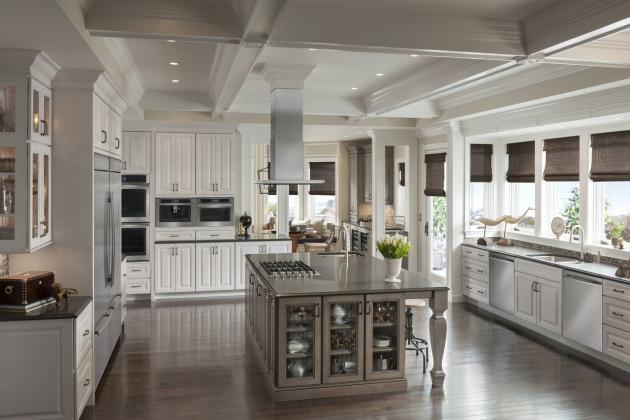If you’re planning a kitchen renovation, you are likely to be considering upgrading your oven. When you start appliance shopping, you will quickly become aware of ovens in various styles and designs, but should you choose a convection oven or a conventional oven? Here we’ll explore the key differences between these two types of oven.
The Heat Source:
Both types of ovens look similar and both can be electric or gas powered. The key difference between conventional and convection ovens is in how that heat source is treated. In a conventional oven, the heat is stationary, rising up from the heating element located at the bottom of the oven. This differs from a convection oven, which has heat blown by fans, circulating the air all around the inside of the oven, creating consistent heat.
The Impact of Differing Heat Patterns:
Since the heat is stationary, conventional ovens can create pockets of warmer or cooler air. This can differ from the temperature on the indicator. This is why many recipes recommend turning your cookie sheet or roasting pan around half way through the cook time. If you don’t do this, you may find the food towards the back of the oven becomes burned, while the food at the front is underdone.
In a convection oven, the heat is more evenly distributed. They can cook food more evenly and more efficiently, cooking up to 25 percent faster compared to a conventional oven. So, if you’ve previously used a conventional oven, you will need to compensate for this when you switch to a convection oven. It is a good idea to check the food approximately ten minutes before it would typically be done.
Additionally, convection ovens do not need the preheat time that a conventional oven would.
The Potential Issues with Convection Ovens:
While it would seem that convection ovens have the edge, there are some potential issues. For example, if you’re baking in a convection oven, the fan moving the hot air around can cause the outside of a cake to cook far quicker than the middle. This can mean that you end up with a dried out or overbaked top of the cake, while the middle is still raw.
If you’re used to using a convection oven, it is possible to compensate for this, but if you’re new to this type of oven, the learning curve may include a couple of ruined cakes or dishes. You can also find oven models that have a “bake” or “thermal bake” setting. When you select this mode, the oven functions like a conventional oven, so you can get more consistent baking results. You can also find convection ovens which have a variable speed fan. You can select a low speed for dehydrating foods or baking cookies, but have a higher fan speed if you’re making a roast.
Other Considerations:
There are a few other considerations when choosing between a conventional and convection oven. The most obvious is price. Conventional ovens tend to be less costly compared to their convection counterparts. But, convection ovens tend to have more features, which may provide greater value for serious home cooks and bakers.
Another consideration is the energy efficiency of the appliance. If you’re concerned about the environmental impact of your home or keeping your energy bills more reasonable, you may prefer the efficiency of a convection oven.
If you’re considering a new oven, you can explore your options with this online collection or speak to one of our home appliance specialists for further help and guidance.

